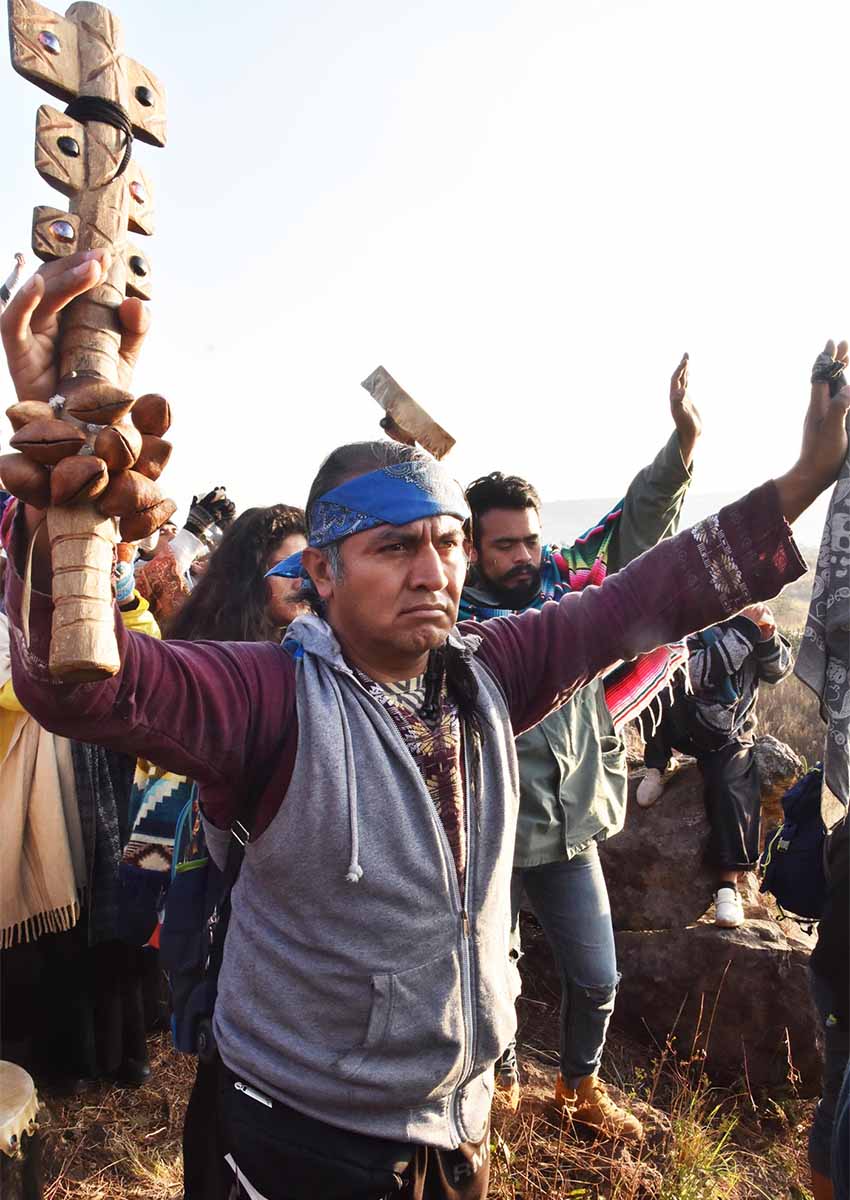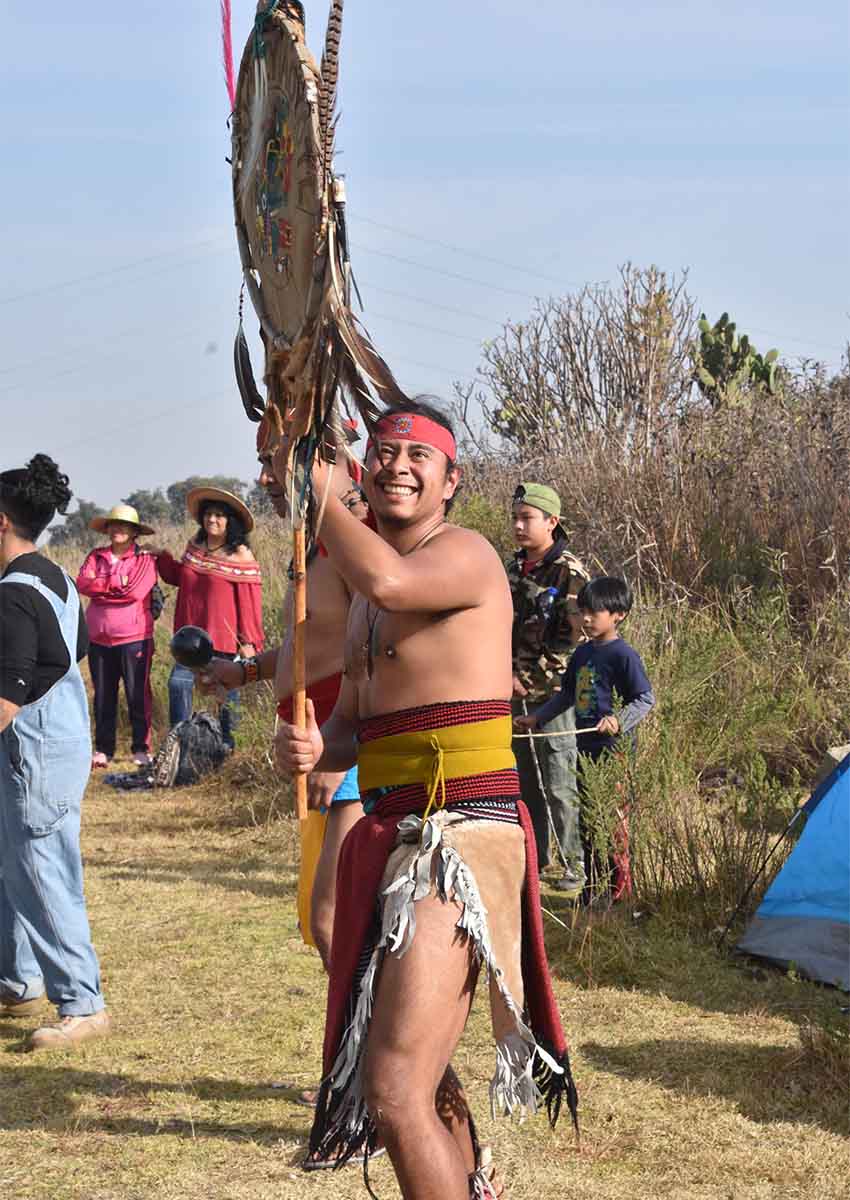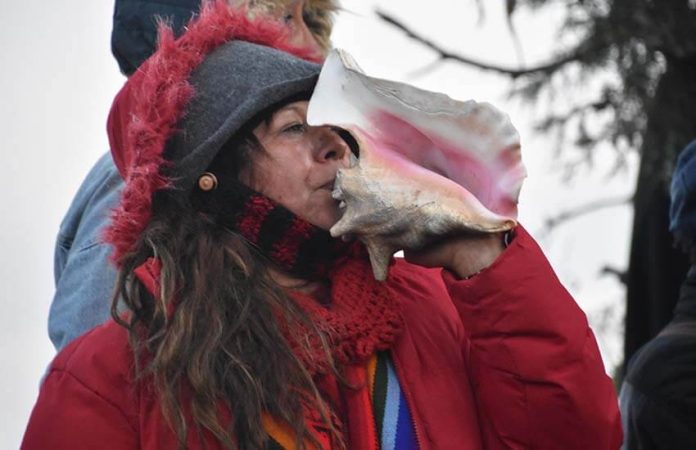In Tuesday’s predawn darkness, as the morning of the winter solstice readied itself to begin with a sunrise, a group of about 100 people gathered in Tenenec, an ancient ceremonial site at the edge of San Gregorio Atlapulco to perform a Mexica (Aztec) ceremony to mark the rebirth of the sun.
San Gregorio Atlapulco, located in Xochimilco, is a pueblo originario (an original town), designated as such because residents have held onto their indigenous ceremonies and rituals dating back to before the Spanish conquest of Mexico.
This solstice ceremony is one of those rituals.
Often considered to be the symbolic death and rebirth of the sun, the winter solstice was, and is, an important time in many indigenous cultures, one that’s often celebrated with festivals and rituals. In Mexica beliefs, the day marks the rebirth of Huitzilopochtli, the lord of the sun and of combat.
Tuesday’s ceremony was held in an area that has likely been used for such events for hundreds of years.
“It is believed that this area was used for solstice ceremonies and to make petitions for rain,” said Javier Márquez Juárez, who has studied and written extensively about indigenous ceremonies and rituals.

In the ceremony space, boulders formed a circle. One large boulder facing east has small holes — called pocitas, or small pools, on top; on one side of the rock canals and steps have been carved that mimic the soil terraces that the Mexica and other ancient indigenous groups used to plant their crops.
The carvings are at least 800 years old, Márquez said. “Water would be poured into the pocitas and would then flow down over the terraces. This would mimic rain falling on them.” This was done to ensure a bountiful harvest.
The group’s ceremony began with Aztec dancers performing a ritual to the four cardinal directions, something that’s required at the beginning of virtually all Mexica ceremonies. “It is to ask permission to have the ceremony,” explained Márquez.
Smoke billowed from incense pots as people faced toward each direction. When the sky began to lighten, the chanting and drumming began. A conch played.
As drummers beat their rhythms on large drums called huehuetls and on small, hand-held ones called tambores, participants performed a joyful song to give thanks to Huitzilopochtli. As the sun slowly began its ascent over Popocatépetl, one of Mexico’s active volcanoes, the chanting, which had begun softly, gained strength. The drumming intensified.
The fact that the sun rises over “El Popo” — as Mexicans affectionately call the volcano — is significant in Mexica beliefs because to them, it’s more than a volcano. “It is considered to be a god,” Márquez said.

During breaks in the chanting, people shouted the name of the Mexica god, Ometéotl. “Ome means ‘two’ and Teotl is ‘god’ or ‘the sacred,’ so it means ‘two gods,’” he said. “In Mexica beliefs, there is a duality: light and dark, male and female, positive and negative. Ometéotl is the Lord of Duality or the God of Duality. His name is shouted to give thanks and to show respect.”
The chanting and drumming continued until the sun had completely risen over Popo; it had been reborn.
Below, bread and atole (a hot drink made from corn) were served. It was time for conviviencia, a time for sharing food and companionship.
“This ceremony is to welcome the rebirth of the sun,” said Juan Carlos Torres Alonso, who traveled from Mexico City’s Iztapalapa borough, about an hour away, to participate in the ceremony.
“It is to capture the history of the Mexican pueblo — to commune with nature, with the land, and with the heavens.”
After the ceremony’s end, the Aztec dancers performed a short distance away to continue to give thanks for the sun’s rebirth. These dances typically go on for hours, and this one was no exception.
There was incense and more drumming on huehuetls, the air filled with the sounds from ayoyetes, an instrument that is tied around a dancer’s ankle, made from shells of the ayoyete tree. Some played sonajas, rattling instruments that look like maracas and are used to keep the time during a dance.
“[The ceremony] is important because it is a way to show respect for our ancestors,” participant José González Sánchez said. “It is a way to respect them and what they have given us. It is to continue our roots.”
But it is more than that.
“Without light, without the sun, nothing lives. We understand how important nature, the environment, is. Sometimes we don’t respect them; we do not give thanks,” González added.
“[This ceremony] is to remember what we receive, to give thanks,” he said, “to have a fiesta.”
Joseph Sorrentino, a writer, photographer and author of the book San Gregorio Atlapulco: Cosmvisiones and of Stinky Island Tales: Some Stories from an Italian-American Childhood, is a regular contributor to Mexico News Daily. More examples of his photographs and links to other articles may be found at www.sorrentinophotography.com He currently lives in Chipilo, Puebla.
